Today Current Affairs:18th June 2022 for UPSC IAS exams, State PSC exams, SSC CGL, State SSC, RRB, Railways, Banking Exam & IBPS, etc
Table of Contents
24th ASEAN-India Meeting:
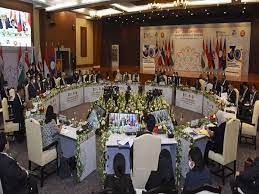
The 24th ASEAN-India Senior Official’s Meeting (SOM) was hosted in Delhi.
- India and ASEAN celebrated the 30th anniversary of their Dialogue Relations.
- Earlier, the 2nd ASEAN Digital Ministers’ (ADGMIN) Meeting with India held, where two sides finalized India-ASEAN Digital work plan 2022 for future collaboration in the field.
Key Highlights:
- The SOM reviewed the ASEAN-India strategic partnership and its future direction.
- The leaders made their assessment on the progress of cooperation under three pillars of Partnership – Political-Security, Economic and Socio-Cultural.
- The meeting deliberated on the steps for further implementation of the ASEAN-India Plan of Action (2021-2025).
- The two sides exchanged views on regional and international issues of mutual interest including the Covid-19 pandemic and post-pandemic recovery.
- Underlining the India’s vision of the Indo-Pacific, emphasized the implementation of the ASEAN-India Joint Statement on Cooperation on ASEAN Outlook on Indo-Pacific (AOIP) to strengthen the ASEAN-India Strategic Partnership.
- The ASEAN side appreciated India’s support to ASEAN and ASEAN-led architecture in the region.
Association of Southeast Asian Nations:
- It is a regional grouping that promotes economic, political, and security cooperation.
- It was established in August 1967 in Bangkok, Thailand with the signing of the ASEAN Declaration (Bangkok Declaration) by the founding fathers of ASEAN, namely Indonesia, Malaysia, Philippines, Singapore and Thailand.
- Its chairmanship rotates annually, based on the alphabetical order of the English names of Member States.
ASEAN countries have a total population of 650 million people and a combined Gross Domestic Product (GDP) of USD 2.8 trillion. - It is India’s 4th largest trading partner with about USD 86.9 billion in trade.
- ASEAN brings together ten Southeast Asian states – Brunei, Cambodia, Indonesia, Laos, Malaysia, Myanmar, the Philippines, Singapore, Thailand and Vietnam – into one organisation.
I2U2 Initiative:
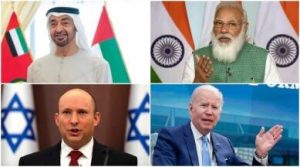
As part of I2U2 initiatives, India, Israel, UAE, and the US will hold its first virtual summit in July 2022.
I2U2 Initiative:
- I2U2 was initially formed in October, 2021 following the Abraham Accords between Israel and the UAE, to deal with issues concerning maritime security, infrastructure and transport in the region.
- At that time, it was called the ‘International Forum for Economic Cooperation’.
- That was referred as the ‘West Asian Quad’.
- I2U2 initiative is a new grouping of India, Israel, USA and UAE.
- In the grouping’s name, ‘I2’ stands for India and Israel, whereas ‘U2’ stands for USA and the UAE.
- This is a great achievement which tells the geopolitical changes that happen in the region.
- This will not only revitalize and re-energize the system of alliances and partnerships around the world, but also stitch together partnerships that did not exist previously or were not utilized to their full extent.
World Competitiveness Index 2022:

The annual World Competitiveness Index was released by the Institute for Management Development (IMD).
- IMD is a Swiss foundation, based in Switzerland, dedicated to the development of international business executives at each stage of their careers
- India has witnessed the sharpest rise among the Asian economies, with a six-position jump from 43rd to 37th rank on the, largely due to gains in economic performance.
Highlights of the Index:
Top Global Performers:
- Europe: Denmark has moved to the top of the 63-nation list from the third position last year, while Switzerland slipped from the top ranking to the second position and Singapore regained the third spot from fifth.
- Asia: The top-performing Asian economies are Singapore (3th), Hong Kong (5th), Taiwan (7th), China (17th) and Australia (19th).
- Others: Both Russia and Ukraine were not assessed in this year’s edition due to the limited reliability of data collected.
India’s Performance:
Performance on four Parameters:
- Economic performance: It has improved from 37th in 2021 to 28th in 2022.
- Government efficiency: It has improved from 46th in 2021 to 45th in 2022.
- Business efficiency: It saw a huge improvement from 32nd rank in 2021 to 23rd in 2022.
- Infrastructure: It on the other hand, saw no change at 49.
Vaccine-Derived Poliovirus (VDPV) Detected In The Environmental Surveillance Of Sewage Samples:
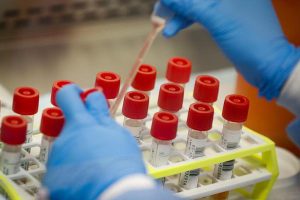
Vaccine-Derived Poliovirus (VDPV) was detected in the environmental surveillance of sewage samples from Kolkata, Bengal.
- Most likely it has come from someone’s gut who is immune deficient and has since multiplied. It is not a case of human-to-human polio transfer.
- A VDPV is a strain of the weakened poliovirus that was initially included in OPV (Oral poliovirus vaccines) and that has changed over time and behaves more like the wild or naturally occurring virus.
- Polio is a crippling and potentially deadly viral infectious disease that affects the nervous system.
- There are three individual and immunologically distinct wild poliovirus strains:
- Wild Poliovirus type 1 (WPV1)
- Wild Poliovirus type 2 (WPV2)
- Wild Poliovirus type 3 (WPV3)
- Symptomatically, all three strains are identical, in that they cause irreversible paralysis or even death.
- However, there are genetic and virological differences, which make these three strains separate viruses which must each be eradicated individually.
- The virus is transmitted by person-to-person mainly through the faecal-oral route or, less frequently, by a common vehicle (for example, through contaminated water or food).
- It largely affects children under 5 years of age. The virus multiplies in the intestine, from where it can invade the nervous system and can cause paralysis.
- Most people with polio do not feel sick. Some people have only minor symptoms, such as fever, tiredness, nausea, headache, pain in the arms and legs, etc.
- In rare cases, polio infection causes permanent loss of muscle function (paralysis).
- Polio can be fatal if the muscles used for breathing are paralysed or if there is an infection of the brain.
- There is no cure, but it can be prevented through Immunisation.
- Vaccines:
- Oral Polio Vaccine (OPV): It is given orally as a birth dose for institutional deliveries, then primary three doses at 6, 10 and 14 weeks and one booster dose at 16-24 months of age.
- Injectable Polio Vaccine (IPV): It is introduced as an additional dose along with the 3rd dose of DPT (Diphtheria, Pertussis and Tetanus) under the Universal Immunisation Programme (UIP).
Amendments In IBBI Regulations, 2017:
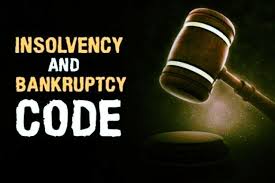
The Insolvency and Bankruptcy Board of India has amended Insolvency and Bankruptcy Board of India (Grievance and Complaint Handling Procedure) Regulations, 2017 and the Insolvency and Bankruptcy Board of India (Inspection and Inspection and Investigation) Regulations, 2017.
Insolvency and Bankruptcy Board of India (Grievance and Complaint Handling Procedure) Regulations, 2017:
- It provides a mechanism for redressal of complaints and grievances filed against insolvency professionals, insolvency professional agencies and information utilities.
- Insolvency and Bankruptcy Board of India (Inspection and Investigation) Regulations, 2017:
- It provides a mechanism for carrying out inspections and investigations on insolvency professional agencies, insolvency professionals and information utilities and passing orders by Disciplinary Committee.
Highlights of the Amendment:
- Revisions in various timelines related to enforcement process provided in the (Grievance and Complaint Handling Procedure) Regulations, 2017 and (Inspection and Investigation) Regulations, 2017 for addressing the issue of delay in present mechanism.
- Effective participation of IPAs (Insolvency Professional Agency) in regulating the IPs (Insolvency Professional) through examination of grievances received against IPs.
- Intimation to Committee of Creditor (CoC)/ Adjudicating Authority (AA) about the outcome of Disciplinary Committee (DC) order.
- Reason for Amendment:
- To have expeditious redressal and also to avoid placing an undue burden on the service providers.
Draft National Data Governance Framework Policy:

The Minister of State, Electronics & Information Technology and Skill Development & Entrepreneurship highlighted the rapid digitalization and the subsequent rise in data volumes necessitating a framework for harnessing the potential of this data.
- Government’s vision is to build a modern framework for Data Governance that will be a kinetic enabler of India’s Digital Economy.
Draft National Data Governance Framework Policy:
- Indian Datasets programme: It calls for the creation of an India Datasets programme, which will consist of non-personal and anonymised datasets from Central government entities that have collected data from Indian citizens or those in India.
- Private companies will be “encouraged” to share such data.
- The non-personal data housed within this programme would be accessible to start ups and Indian researchers(Non-personal data is any set of data which does not contain personally identifiable information).
- India Data Management Office (IDMO): The draft also calls for creation of an India Data Management Office (IDMO), which will be in charge of designing and managing the India Datasets platform.
- The IDMO will prescribe rules and standards, including anonymization standards for all entities (government and private).
- For purposes of safety and trust, any non-personal data sharing by any entity can be only via platforms designated and authorized by IDMO.
- No Selling of Data: The most significant change in this new draft is the omission of the most contentious provision in the old draft — selling data collected at the Central level in the open market.
India Ranks Third In Renewable Energy Installations In 2021:
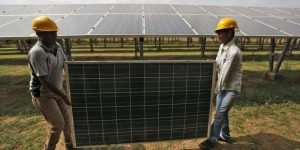
India ranked third in renewable energy installations in 2021, after China and Russia, according to a Renewable 2022 Global status report published by REN21 (Renewable Energy Policy Network for the 21st Century).
- India installed 4 gigawatts (GW) of renewable energy projects in 2021
- India ranked fourth in total solar installations (60.4 GW) for the year – overtaking Germany (59.2 GW) for the first time.
- Overall countries added around 3,146 GW of total installed renewable power capacity in 2021 – a rise of 11% from the previous year.
- Despite the rise in installed capacity, the share of renewables in global energy use stagnated in 2021.
- The renewable energy capacities achieved so far come nowhere close to the targets required to keep the world on track to reach net-zero emissions by 2050.
- Despite the impacts of the COVID-19 pandemic, renewables saw a year of record growth in both investment and installation.
- The invasion of Ukraine added to the energy crisis. Governments, however, responded by increasing fossil fuel production and subsidies.
- This has caused a record surge in carbon dioxide emissions (up by 6%, adding more than two billion tonnes).
- India has announced a target of 500 GW of renewable energy by 2030through sources such as solar photovoltaic (PV) energy, wind and hydropower.
- Currently, projects worth almost $197 billion are underway in India.
- India extended its national solar production programme, which provides incentives to domestic and international companies for setting up battery manufacturing plants.
- In 2021, after India increased its cap on solar PV installations under its net metering scheme, the country’s rooftop PV market hit a record high.
Suspension Of A Member Of Parliament:
West Bengal Legislative Assembly Speaker revoked the suspension of seven MLAs, including that of Leader of the Opposition.
Rules of house:
- The Speaker may direct any member who refuses to obey his decision, or whose conduct is, in his opinion, grossly disorderly, to withdraw immediately from the Assembly”.
- The member must absent himself during the remainder of the day’s meeting.
- Should any member be ordered to withdraw for a second time in the same session, the Speaker may direct the member to absent himself “for any period not longer than the remainder of the Session”.
Provisions for Suspension of a Member of Parliament:
- Rules 373, 374, and 374A of the Rules of Procedure and Conduct of Business in Lok Sabha provide for the withdrawal of a member whose conduct is “grossly disorderly”, and suspension of one who abuses the rules of the House or willfully obstructs its business.
- The maximum suspension as per these Rules is “for five consecutive sittings or the remainder of the session, whichever is less”.
- The maximum suspension for Rajya Sabha under Rules 255 and 256 also does not exceed the remainder of the session.
- Similar Rules also are in place for state legislative assemblies and councils which prescribe a maximum suspension not exceeding the remainder of the session.
Article 212 (1):
- It states that “The validity of any proceedings in the Legislature of a State shall not be called in question on the ground of any alleged irregularity of procedure”.
Press Council Of India Chairperson : Justice Ranjana Prakash Desai
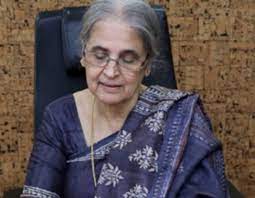
Justice Ranjana Prakash Desai, a former judge of the Supreme Court, has been selected for the post of the Press Council of India (PCI) Chairperson.
- Justice Desai had recently headed the Delimitation Commission on J&K which was set up to redraw the Assembly constituencies of the Union Territory.
- The post was lying vacant since Justice Chandramauli Kumar Prasad (retd.) completed his term in November 2021.
- The Press Council of India (PCI) is a statutory organization operating under the Press Council Act of 1978.
- It was formed in 1966.
- It is the self-regulatory watchdog of the press.
- The Council has a chairman – traditionally, a retired Supreme Court judge, and 28 additional members of which 20 are members of media.
Cost Inflation Index (CII) For FY 2022-23:

The Central Board of Direct Taxes (CBDT) notified the cost inflation index (CII) for FY 2022-23 via a notification dated June 14, 2022. The Cost Inflation Index for FY 2022-23 relevant to AY 2023-24 is 331. For the previous year, i.e., FY 2021-22, CII was notified as 317.
- The CII is an index that is used to calculate the inflation-adjusted rise in the value of an asset including land, buildings, houses, gold jewellery, debt mutual funds, and so on.
- This CII number will assist you determine the long-term capital gains on which you are required to pay taxes when you file your income tax returns (ITR) next year.
- This number will be used to calculate inflation-adjusted cost for only those assets that allow for inflation-adjusted (indexation benefit).
- As a result, the CII value cannot be used to calculate LTCG/LTCL on equity mutual funds because any sum above Rs 1 lakh each fiscal year is taxed at a flat rate of 10% without the advantage of indexation.
- The formula to calculate inflation-adjusted cost price is: (CII of the year of sale/CII for the year of purchase) Actual cost price.
- The government declared in Budget 2017 that the base year would be changed from 1981 to 2001 due to challenges in obtaining appropriate information by taxpayers.
- In the case of an asset purchased prior to April 1, 2001, the cost of the asset is regarded as the fair market value on April 1, 2001.




